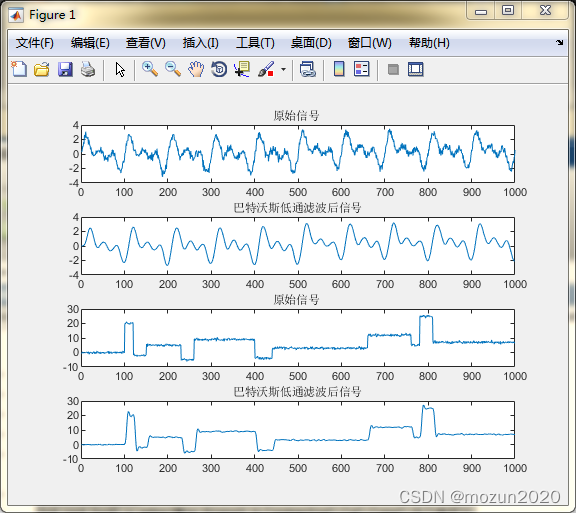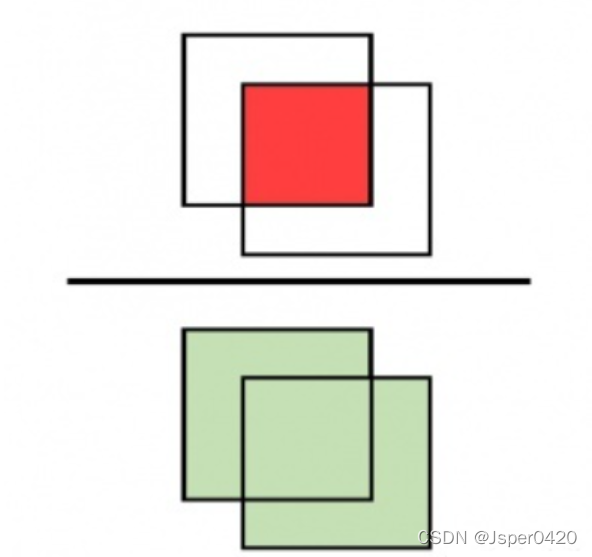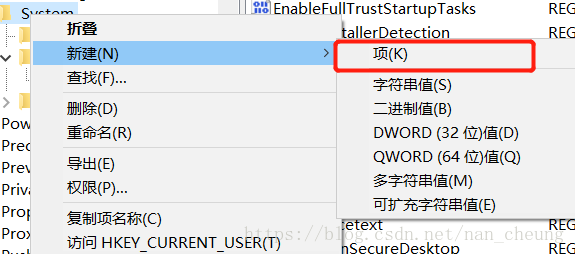当前位置:网站首页>Dynamically add default fusing rules to feign client based on sentinel + Nacos
Dynamically add default fusing rules to feign client based on sentinel + Nacos
2022-04-23 18:10:00 【dawnsun001】
As the business grows , Micro service is imperative ; Recently took over an old project to use sentinel+nacos Fusing and current limiting , The fuse rules are configured the same , I feel a little redundant , Inefficient development . Think about upgrading , Because the service depends on the interface, it is through feignClient Called , Yes feignClient Call interface , Automatic scanning and dynamic realization of fuse rules .
One 、 Home page scanning feignClient Dependent interface , Dynamically generate fusing rules , push nacos

-
Realization ApplicationRunner Interface , rewrite run Method , according to EnableFeignClients Specify the package to load feignClient Class collection
@Override public void run(ApplicationArguments args) { Class<?> mainClass = deduceMainApplicationClass(); log.info(" Start loading default rules ,mainClass:{}", mainClass); if (mainClass == null) { throw new RuntimeException("can not fount main class"); } EnableFeignClients enableFeignClientsAnnotation = mainClass.getAnnotation(EnableFeignClients.class); if (enableFeignClientsAnnotation != null) { String[] feignClientPackages; String[] feignClientDeclaredPackages = enableFeignClientsAnnotation.basePackages(); // The statement feignClient The package name if (feignClientDeclaredPackages.length == 0) { feignClientPackages = new String[]{ mainClass.getPackage().getName()}; } else { feignClientPackages = feignClientDeclaredPackages; } // Initialize demotion rule initDeGradeRule(feignClientPackages); } log.info(" The default degradation rule processing is completed "); } -
according to feignClient Class collection , Initialize the fusing rule , And push nacos
private void initDeGradeRule(String[] feignClientPackages) { List<DegradeRule> localDegradeRuleList = new ArrayList<>(); Set<Class> feignClientClass = getFeignClientClass(feignClientPackages); for (Class clientClass : feignClientClass) { List<DegradeRule> rules = initRules(clientClass); localDegradeRuleList.addAll(rules); } List<DegradeRule> remoteDegradeRuleList = fetchRemoteRules(); // long-range nacos There are no rules , Then use local rules directly if (remoteDegradeRuleList == null || remoteDegradeRuleList.isEmpty()) { pushRules(localDegradeRuleList); return; } // Local rules Merge Remote rule policy proess(localDegradeRuleList, remoteDegradeRuleList); // Push local rules , To nacos pushRules(localDegradeRuleList); } -
obtain FeignClient class set
private Set<Class> getFeignClientClass(String[] packageNames) { ClassScanner classScanner = new ClassScanner(); Set<Class> feignClientClass = new HashSet<>(); for (String packageName : packageNames) { feignClientClass.addAll(classScanner.scan(packageName, FeignClient.class)); } return feignClientClass; } -
according to feignClient class object , Extract request mapping
private final static String HTTP_PROTOCOL_PREFIX = "http://"; private final static String ANNOTATION_VALUE_PREFIX = "${"; private final static String ANNOTATION_VALUE_SUFFIX = "}"; public List<DegradeRule> initRules(Class cla) { List<DegradeRule> degradeRuleList = new ArrayList<>(); FeignClient feignClient = (FeignClient) cla.getAnnotation(FeignClient.class); String classRequestMappingUrl = ""; RequestMapping classRequestMapping = (RequestMapping) cla.getAnnotation(RequestMapping.class); if (null != classRequestMapping) { classRequestMappingUrl = classRequestMapping.value()[0]; } String serviceName = feignClient.name(); if (serviceName.startsWith(ANNOTATION_VALUE_PREFIX) && serviceName.endsWith(ANNOTATION_VALUE_SUFFIX)) { serviceName = this.environment.resolvePlaceholders(serviceName); } Method[] methods = cla.getDeclaredMethods(); for (Method method : methods) { degradeRuleList.add(buildDegradeRule(getResourceName(classRequestMappingUrl, serviceName, method))); } DegradeRuleManager.loadRules(degradeRuleList); return degradeRuleList; -
Map on request , Splice resource identification
private String getResourceName(String crmu, String serviceName, Method method) { crmu = crmu.startsWith("/") ? crmu : "/" + crmu; String resourceName = ""; RequestMapping methodRequestMapping = method.getAnnotation(RequestMapping.class); if (null != methodRequestMapping) { String mrm = methodRequestMapping.value()[0]; resourceName = HTTP_PROTOCOL_PREFIX + serviceName + crmu + (mrm.startsWith("/") ? mrm : "/" + mrm); } PostMapping methodPostMapping = method.getAnnotation(PostMapping.class); if (null != methodPostMapping) { String mpm = methodPostMapping.value()[0]; resourceName = HTTP_PROTOCOL_PREFIX + serviceName + crmu + (mpm.startsWith("/") ? mpm : "/" + mpm); } return resourceName; } -
Use resource identification , Build default rules
private DegradeRule buildDegradeRule(String resourceName) { DegradeRule rule = new DegradeRule(); // Set resource name rule.setResource(resourceName); // Set degradation rules TR 10 ms rule.setCount(200); // Type of rule RT rule.setGrade(RuleConstant.DEGRADE_GRADE_RT); // Window time rule.setTimeWindow(10); rule.setMinRequestAmount(3); rule.setStatIntervalMs(30000); rule.setSlowRatioThreshold(0.6); return rule; } -
Get remote nacos To configure
private List<DegradeRule> fetchRemoteRules() { return JSONObject.parseArray(nacosService.getConfig(dataId, groupId), DegradeRule.class); } -
Local rules Merge Remote rule policy
private void proess(List<DegradeRule> localDegradeRuleList, List<DegradeRule> remoteDegradeRuleList) { for (DegradeRule rule : remoteDegradeRuleList) { if (localDegradeRuleList.contains(rule)) { DegradeRule ldr = localDegradeRuleList.get(localDegradeRuleList.indexOf(rule)); if (ldr.equals(rule)) { continue; } localDegradeRuleList.remove(ldr); localDegradeRuleList.add(rule); } else { localDegradeRuleList.add(rule); } } } -
Push the fusing rule to nacos
private void pushRules(List<DegradeRule> localDegradeRuleList) { SerializeConfig serializeConfig = new SerializeConfig(); serializeConfig.propertyNamingStrategy = PropertyNamingStrategy.CamelCase; String contentStr = JSON.toJSONString(localDegradeRuleList, serializeConfig, SerializerFeature.PrettyFormat); nacosService.publish(dataId, groupId, contentStr, ConfigType.JSON.getType()); }
Two 、 Use AOP cut feign call , Dynamically add fuse logic execution

10. Reference resources Sentinel Of SentinelResourceAspect Inherit AbstractSentinelAspectSupport Realization feign Call interception
@Aspect
@Slf4j
@Component
public class FeignMethodAspect extends AbstractSentinelAspectSupport {
@Around("within(feign.Client+)")
public Object around(ProceedingJoinPoint pjp) throws Throwable {
log.info("within(feign.Client+) pjp {}, args:{}", pjp, pjp.getArgs());
String resourceName = pjp.getArgs()[0].toString().split(" ")[1];
Entry entry = null;
try {
Object var18;
try {
entry = SphU.entry(resourceName, ResourceTypeConstants.COMMON, EntryType.OUT, pjp.getArgs());
Object result = pjp.proceed();
var18 = result;
return var18;
} catch (BlockException var15) {
String resource = var15.getRule().getResource();
log.error("FeignClient Interface triggers resource:{} The rules , The interface has been “ Current limiting / Fuse / Downgrade ”, The business system returns the default null value , Abnormal information :{}", resource, var15);
return null;
} catch (Throwable var16) {
this.traceException(var16);
}
} finally {
if (entry != null) {
entry.exit(1, pjp.getArgs());
}
}
return null;
}
}
- Configuration and use JDK A dynamic proxy , Otherwise intercept feignClient The call fails
spring:
aop:
proxy-target-class: false
- push nacosService rely on NacosConfigManager
public Boolean publish(String dataId, String group, String content, String type) {
try {
return nacosConfigManager.getConfigService().publishConfig(dataId, group, content, type);
} catch (NacosException e) {
log.error("NacosService publish e:{}", e);
}
return false;
}
- obtain nacos To configure
public String getConfig(String dataId, String group) {
try {
return nacosConfigManager.getConfigService().getConfig(dataId, group, 10000l);
} catch (NacosException e) {
log.error("NacosService publish e:{}", e);
}
return Strings.EMPTY;
}
Seeing your letters is like seeing you in person. , Thank you for your patience in reading , I hope it will be of some help to you , Praise is a virtue , I wish you every success in your work Promoting to a higher position !
版权声明
本文为[dawnsun001]所创,转载请带上原文链接,感谢
https://yzsam.com/2022/04/202204230544289080.html
边栏推荐
- Installation du docker redis
- [UDS unified diagnostic service] (Supplement) v. detailed explanation of ECU bootloader development points (1)
- Classification of cifar100 data set based on convolutional neural network
- Re expression régulière
- I/O多路复用及其相关详解
- Closure type of rust (difference between FN, fnmut and fnone)
- .105Location
- Nat Commun|在生物科学领域应用深度学习的当前进展和开放挑战
- 【ACM】455. 分发饼干(1. 大饼干优先喂给大胃口;2. 遍历两个数组可以只用一个for循环(用下标索引--来遍历另一个数组))
- NVIDIA Jetson: GStreamer and openmax (GST OMX) plug-ins
猜你喜欢

MATLAB小技巧(6)七种滤波方法比较

YOLOv4剪枝【附代码】

From introduction to mastery of MATLAB (2)

深度学习经典网络解析目标检测篇(一):R-CNN
![[UDS unified diagnostic service] IV. typical diagnostic service (4) - online programming function unit (0x34-0x38)](/img/07/4814eb203dcca59416a7997bbedbf6.png)
[UDS unified diagnostic service] IV. typical diagnostic service (4) - online programming function unit (0x34-0x38)

Deep learning classic network analysis and target detection (I): r-cnn
![[UDS unified diagnostic service] (Supplement) v. detailed explanation of ECU bootloader development points (2)](/img/91/3272d5ad04cd1d8476c739546f4356.png)
[UDS unified diagnostic service] (Supplement) v. detailed explanation of ECU bootloader development points (2)

From source code to executable file

.104History

Win1远程出现“这可能是由于credssp加密oracle修正”解决办法
随机推荐
Box pointer of rust
Qtablewidget usage explanation
解决报错max virtual memory areas vm.max_map_count [65530] is too low, increase to at least [262144]
Read excel, int digital time to time
Generate verification code
Gobang game based on pyGame Library
Yolov4 pruning [with code]
Queue solving Joseph problem
C language to achieve 2048 small game direction merging logic
Win1远程出现“这可能是由于credssp加密oracle修正”解决办法
Mode of interprocess communication
Stanford machine learning course summary
Gst-launch-1.0 usage notes
Docker 安裝 Redis
Implement a simple function to calculate the sum of all integers between M ~ n (m < n)
C network related operations
ROS package NMEA_ navsat_ Driver reads GPS and Beidou Positioning Information Notes
re正則錶達式
Nanotechnology + AI enabled proteomics | Luomi life technology completed nearly ten million US dollars of financing
MySQL 中的字符串函数